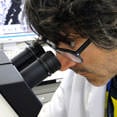Plastic nanotechnology for food contact materials

Nanotechnology is a field that appeals to companies, researchers and public bodies. Its applications in electronics, biomedicine, construction, aeronautics, agriculture and materials technology have multiplied. In the last decade, many benefits that substances incorporation in nanoform have when they are applied to food packaging have been discovered. In particular, promising results are expected for silver nanoparticles as antimicrobial agents, for cellulose nanoparticles as reinforcements to improve the mechanical properties and for clays in nanoform as reinforcement to improve the mechanical and thermal resistance and increase its barrier properties. Metallic oxides can be used as microwave susceptors and antimicrobial agents, while nanotubes, nanoliposomes and mesoporous materials have a key role as carriers of other active substances. On the other hand, a breakthrough has been made also in the use of nanoemulsions as antimicrobial agents.

In spite of all the researches that promise this long list of applications, the current regulation for food contact materials only allows that a few of them are available in the market.
Toxicity and environmental impact are two of the main barriers that the materials containing these substances must overcome. With respect to toxicity, the main risk is associated to the potential migration of nanoparticles to food. Furthermore, the processing of these materials could potentially lead to the formation of NIAS, Non-Intentionally Added Substances, which shall be studied. For that purpose, a series of analytic screenings to identify the present substances and assess their exposure is often performed, if needed.
Currently, most of the nanoparticles or nanomaterials studied are not included in the regulations on food contact materials. In this sense, any nanomaterial is likely to be included in successive reviews or amendments of the regulations in force after having a positive assessment by the European Food Safety Authority. Therefore, some nanomaterials, whose benefits have been seen for the applications in food packaging, will be in the market in the future, but many others will not pass the laboratory phase, since the assessment and authorization process implies a series of steps that, in most cases, do not take place. This is due to different factors, such as the fact that the development has been made in public non-profit institutions, focused in many cases on fundamental research. The economic cost of scaling, the researches needed and the risk assessments can also make unworkable the marketing of the nanomaterial developed. In some cases, even the development can become obsolete due to the onset of new solutions with more functionalities or lower cost.